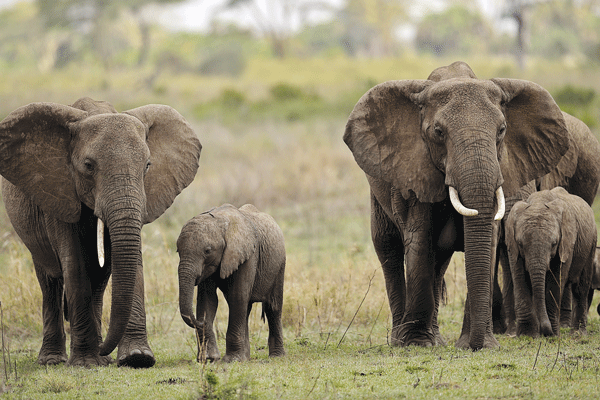
BY LEARNMORE NYONI
SEBAKWE — A drive through the 63 000-hectare Midlands Black Rhino Conservancy, a protected area of rich bio-diversity and home to a variety of bird and animal life exposes one to creatures such as wildebeests, giraffes, warthogs, antelopes, reedbucks, rhinos, leopards, sables and occasionally one may encounter migratory elephants.
The Zimbabwe National Parks and Wildlife Authority-run Sebakwe Recreational Park lies in the heart of this 30-year-old conservancy of both farm and bush area set up in the late 1980s by a group of 12 farmers, who felt obligated to protect the wildlife in the vicinity of their farms and made monthly contributions towards the sustainability of bio-diversity in the area.
In 2005, the conservancy had a total of 63 rhinos, up from the original 20 translocated into the interior of the Midlands province to protect the endangered species from the Zambezi Valley owing to the incessant poaching along the Zambian border. From that towering success story, the conservancy unfortunately only has six rhinos left.
Tangarira, one popular rhino in the conservancy, was lost to poaching.
The entry of African Chrome Fields (ACF), a South African chrome-mining company, which at its peak employed
1 800 people, into the conservancy area was greeted by many in Kwekwe with smiles as the panacea to the growing unemployment.
However, under this veil of triumph lay another problem. The clearing of huge tracts of land for mining led to the displacement of many animals, environmental degradation and the irrecoverable destruction of animal habitat.
- Chamisa under fire over US$120K donation
- Mavhunga puts DeMbare into Chibuku quarterfinals
- Pension funds bet on Cabora Bassa oilfields
- Councils defy govt fire tender directive
Keep Reading
A visit to one of the disused plants of the mining company at Two Springs, deep in the conservancy area, shows furrows and heaps of dumps from mining activities, with no reclamation efforts having been done.
This is besides the fact that the mining company has injected financial support towards the conservation efforts of the Midlands Black Rhino Conservancy.
ACF manager Leon Richardson said the intervention efforts of the company have hugely contributed to the conservation efforts in the animal-rich area.
“Since we started mining in the area and supporting conservation efforts, the numbers of animal herds have significantly improved in the conservancy,” he said.
While the Black Rhino conservator, Brilliant Chibura, acknowledges the financial support that the mine has provided and submitted that without it, the conservancy “would be in trouble” he, however, bemoaned the non-redeemable destruction of the wildlife habitat which is threatening animal and bird life in the conservancy.
“Habitat loss is the major challenge we are facing as well as the destruction of ecological processes that support biodiversity. We have had support from local mines like African Chrome Fields, but this does not take away the fact that our habitat is shrinking because of the activities of this mine,” he said.
Wildlife magazine, Footprints, in its July 18, 2019 Facebook post, bemoaned the environmental degradation in the conservancy area due to ACF’s mining activities.
“An unfolding environmental disaster, one of the 12 chrome wash-plants in the middle of the Sebakwe National Park. The water to wash the soil to extract the chrome is taken from Lake Sebakwe, which is the main water supply for Kwekwe and Redcliff. Sebakwe is the most important area of biodiversity after the Eastern Highlands,” the post read. While the land reform programme eased pressure from congested rural reserves and providing farming land to the historically marginalised, newer settlements have cropped up without a conservation culture and this is threatening the harmonious existence of humans and animals.
Illegal fish-netting, subsistence bush-meat poaching, indiscriminate cutting down of trees for fuel and other purposes, veld fires to force animals into snare corridors and the removal of some essentials in the forests needed for the support of sustainable biodiversity are some of the challenges that the conservancy is facing after the creation of newer settlements.
The conservancy management committee’s public relations manager, Doreen Sibanda, acknowledged the dexterity of the conservancy to survive against challenges emanating from the rising population and mining activities in the conservancy and said they had engaged the government to ensure the sustainability of the conservancy’s bio-diversity.
“We have engaged government through the office of the Minister of State for the Province. We have also engaged the ruling party and ZimParks to try and come up with a sustainable solution to the challenges we are facing,” she said.
The situation has been worsened by the fact that ACF has retrenched almost 800 employees, leaving this unemployed population dependant on either game poaching for bush-meat or the unsustainable harvest of trees, particularly the mopane, to sell to the growing market owing to the current power challenges in the country.
Through the support of the United Kingdom-based Sebakwe Black Rhino Trust, the conservancy set up a conservation educational centre in 2004 on the southern part of the conservancy, to inculcate environmental awareness to the local community, particularly the school-goers. Community liaison officer for the Midlands Black Rhino Conservancy and director for the Sebakwe educational centre, Paloma Mutemi, said the centre, having realised that conservation was a social issue that needed a total mindset change in the local community, they set up a number of programmes to counter the
challenge of poaching and environmental degradation “We have done a number of empowerment and environmental projects with various community groups, particularly the women, such as bee-keeping, borehole drilling, supplementary feeding, set up a rhino scholarship, nutritional gardens, entrepreneurship trainings and training locals as ranger scouts,” she said.
Vietnam and China are the world’s largest markets for rhino horns, where it is believed to have medicinal properties although not supported by scientific research.
Even if rhino-poaching activities are largely international in nature, well-placed Kwekwe locals have been implicated as middlemen in the poaching activities.











